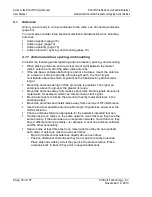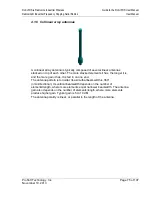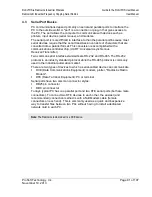
Guide to the RLX-IFHS User Manual
RLX-IFHS ♦ RadioLinx Industrial Wireless
User Manual
RadioLinx® Industrial Frequency Hopping Serial Radios
Page 72 of 107
ProSoft Technology, Inc.
November 19, 2013
4.1
Antennas
When you are ready to connect antennas to the radio, see Connecting antennas
(page 53).
You must also consider three important electrical characteristics when selecting
antennas:
Antenna pattern (page 73)
Antenna gain (page 73)
Antenna polarity (page 74)
Antenna location, spacing, and mounting (page 72)
4.1.1 Antenna location, spacing, and mounting
Consider the following points regarding antenna location, spacing, and mounting:
When placing antennas, ensure a clear line of sight between the master
radio's antenna and all of the other radio antennas.
If the site base contains obstructing terrain or structures, mount the antenna
on a tower or rooftop to provide a line-of-sight path. The line-of-sight
consideration becomes more important as the transmission path becomes
longer.
Mount the antennas as high off the ground as is practical. The higher an
antenna is above the ground, the greater its range.
Mount the antennas away from massive structures. Radio signals bounce off
metal walls, for example, which can compromise a clear signal.
Mount antennas to minimize the amount of nearby metal structures in the
antenna pattern.
Mount the antennas and install radios away from sources of RF interference.
Use the shortest possible antenna cable length. Signals lose power over the
cable's distance.
Choose antennas that are appropriate for the network's intended function.
If antennas are on radios on the same network, mount them so they have the
same polarity. If the antennas are on separate networks, mount them so they
have a different antenna polarity
—for example, mount one antenna vertically
and the other horizontally.
Space radios at least three feet (one meter) apart so they do not overload
each other. If antennas must be near each other:
o
Mount omnidirectional antennas directly above each other.
o
Position directional antennas so they do not point at nearby antennas.
Place antennas side by side if they point in the same direction. Place
antennas back to back if they point in opposite directions.
Summary of Contents for RadioLinx RLX-IFHS
Page 6: ......
















































